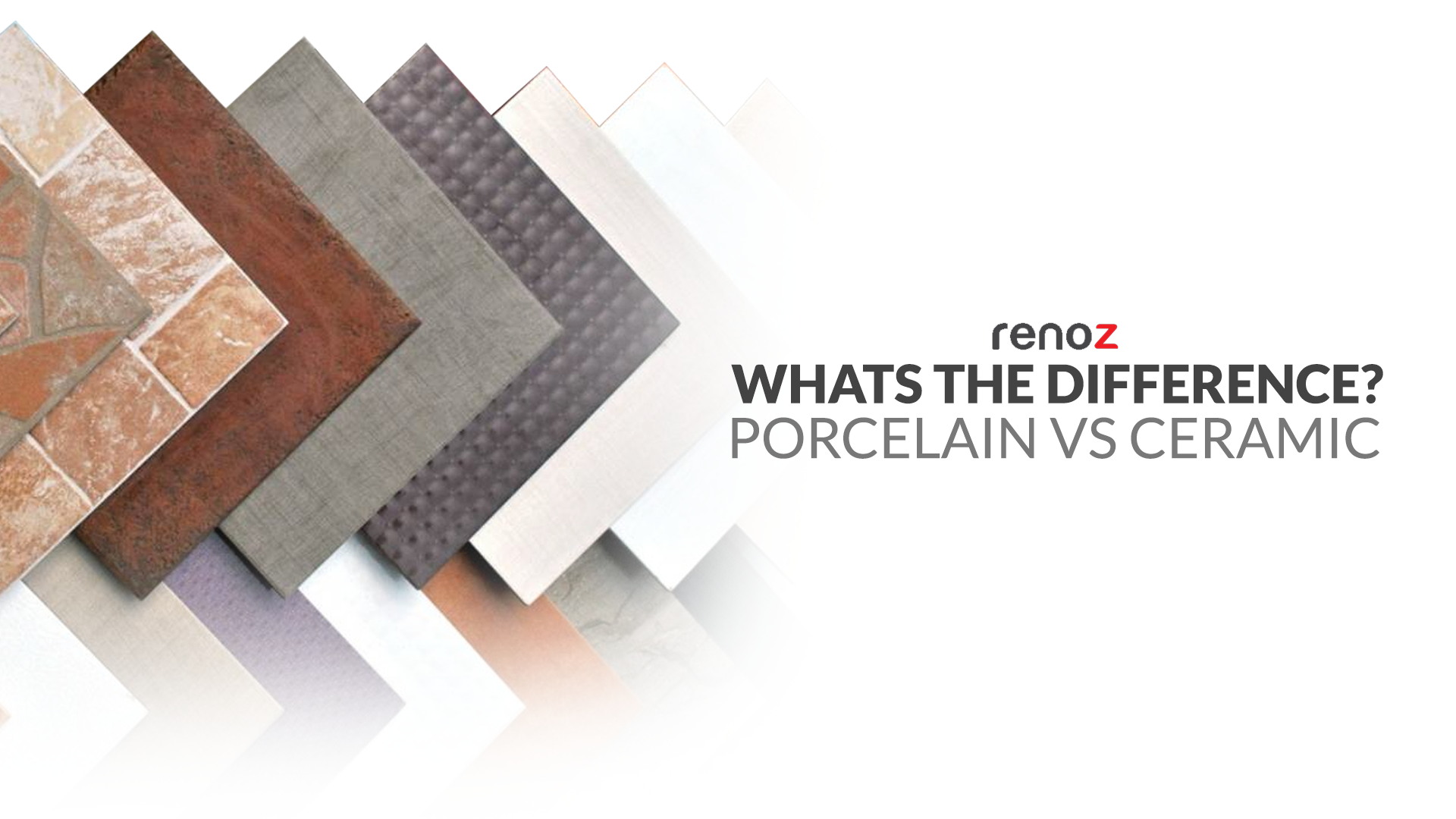What is the difference between ceramic and porcelain tiles?

Porcelain vs. Ceramic Tiles: An In-Depth Comparison
Introduction: Choosing between porcelain and ceramic tiles requires a careful examination of various factors. Each option possesses distinct qualities and is suitable for different applications. In this detailed article, we will delve into the aspects surrounding porcelain and ceramic tiles, providing a comprehensive analysis to help you determine which option is better suited for your specific requirements.
Composition and Manufacturing Process: Porcelain Tiles are manufactured using refined clay, feldspar, silica, and other natural materials. These ingredients are finely ground, pressed under high pressure, and fired at extremely high temperatures. As a result, porcelain tiles are dense and less porous compared to ceramic tiles. On the other hand, ceramic tiles are composed of clay, minerals, and water. The mixture is molded, dried, and fired at lower temperatures. Ceramic tiles are generally less dense and more porous than porcelain tiles.
Durability and Water Resistance: Porcelain Tiles are highly durable and suitable for high-traffic areas. They are resistant to chipping, scratching, and staining. With a low water absorption rate, porcelain tiles are ideal for moisture-prone areas such as bathrooms and kitchens. They can withstand extreme temperature changes. Ceramic Tiles, although relatively durable, are not as strong as porcelain tiles. They are more susceptible to chipping and scratching. Due to their higher water absorption rate, ceramic tiles are better suited for dry or low-moisture areas and are not recommended for freezing temperatures.
Application and Usage: Porcelain Tiles are versatile and suitable for both indoor and outdoor use. They are ideal for high-traffic areas like hallways, entryways, and commercial spaces. Porcelain tiles are well-suited for areas with frequent water exposure, such as bathrooms, kitchens, and pool surroundings. Ceramic Tiles, on the other hand, are primarily used for indoor applications. They are suitable for low-traffic areas like bedrooms, living rooms, and decorative walls. Ceramic tiles are recommended for areas where water exposure is limited, such as backsplashes or dry areas.
Aesthetics and Design Options: Porcelain Tiles offer a wide range of designs, including options that mimic natural stone, wood, and other materials. They provide more design versatility, including larger format tiles and intricate patterns. The color options for porcelain tiles are vast, ranging from subtle neutrals to bold and vibrant shades. Ceramic Tiles also come in various designs, patterns, and textures. They are suitable for achieving a traditional or vintage look. Ceramic tiles, however, are limited to smaller format tiles compared to porcelain. The color options for ceramic tiles are extensive, catering to a wide range of preferences.
Installation and Maintenance: Due to their density, porcelain tiles can be more challenging to cut and install compared to ceramic tiles. They often require professional installation to ensure proper handling and reduce the risk of breakage. Porcelain tiles have relatively low maintenance requirements, with regular cleaning being sufficient to maintain their appearance. Ceramic tiles, being less dense, are easier to cut and install. They can be installed by experienced DIYers. Similar to porcelain tiles, ceramic tiles require regular cleaning to preserve their look.
Cost Considerations: Porcelain Tiles are generally more expensive than ceramic tiles. This is due to their higher quality, durability, and manufacturing process. High-end porcelain tiles with intricate designs or unique finishes can be even more costly. Ceramic Tiles, on the other hand, are typically more affordable than porcelain tiles. The cost can vary based on factors such as design, size, and manufacturer.
Choosing between porcelain and ceramic tiles depends on various factors such as durability, water resistance, application, aesthetics, installation, maintenance, and cost. Porcelain tiles are recommended for high-traffic areas, areas prone to moisture, and those requiring superior durability. They offer a wide range of design options and are suitable for both indoor and outdoor use. Ceramic tiles, on the other hand, are suitable for low-traffic areas and applications with limited water exposure. They provide versatility in design and are more budget-friendly compared to porcelain tiles. Ultimately, the choice between porcelain and ceramic tiles should be based on your specific needs, preferences, and the demands of the intended space. Consulting with professionals and considering all aspects will help you make an informed decision that best fits your requirements.
Subjectively, the better tile option, whether porcelain or ceramic, can vary based on personal preferences and individual project requirements. Some individuals may prefer the superior durability and water resistance of porcelain tiles, especially for high-traffic areas or spaces prone to moisture. Others may find the affordability and diverse design options of ceramic tiles more appealing for their specific aesthetic goals. Ultimately, the "better" tile choice depends on your priorities, budget, and the specific needs of your project. It is recommended to consider factors such as durability, water resistance, design options, and cost to determine which tile type aligns best with your subjective preferences.






